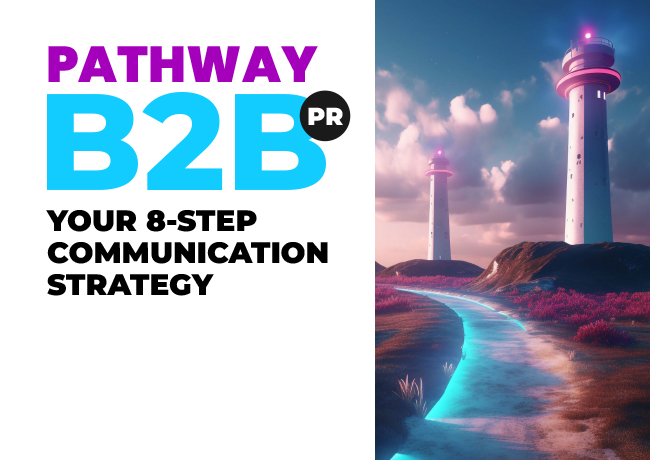
Using AI Tools in PR – 3 mistakes to avoid
In B2B communications, as in most other industries, the integration of cutting-edge technologies has become essential for crafting compelling narratives and maintaining a brand’s reputation. Among these innovations, AI tools like Bard and ChatGPT have emerged as powerful allies for communications professionals, offering new capabilities ranging from automation to the creation of new and unique ideas. However, as with any tool, potential pitfalls can arise if not handled with care. In this blog, we’ll delve into three typical mistakes to avoid when using AI tools in PR and communications.
1 Overlooking the importance of human relationships in Public Relations
In the age of AI, it’s easy to get caught up in the allure of automation. AI tools like Bard and ChatGPT can generate impressive content in the blink of an eye, from press releases to social media posts. However, the first mistake to avoid is relying solely on these tools and neglecting the invaluable human touch.
Effective PR is built on relationships, emotions, and nuance — elements that AI, despite its sophistication, can struggle to fully comprehend. While AI can draft a press release, it might miss the subtle tonal nuances that resonate with human readers. It may also struggle to meet a client’s tone of voice. Additionally, AI-generated responses in customer or even journalist interactions may appear robotic and detached, undermining the genuine human connections PR aims to establish.
To avoid this mistake, PR professionals should use AI tools as aids rather than replacements. Leverage AI-generated drafts as starting points, then infuse them with human creativity and empathy. Remember, it is emotional resonance and personality that truly connects with the audience and cultivates a positive brand image.
Furthermore, without the human touch and all-important fact checking, AI can risk eroding the trust between PRs and journalists. PRs need to protect that trust at all costs. Don’t get lost in a crowd of AI-generated press releases, or risk being fake news. Instead, make journalists’ lives easier by pitching content that is well-researched, has an original perspective and is tailored appropriately to their publication.
2 Neglecting ethical considerations when prompting and reviewing AI-generated PR content
The allure of AI lies in its ability to churn out content at an impressive pace, often faster than human capacity. However, this speed can lead to the second mistake: neglecting ethical considerations. AI tools are only as good as the data they’re trained on, and biases present in the data can inadvertently seep into the content they generate.
PR professionals are responsible for ensuring that the messaging they deliver is inclusive, respectful, and free from any form of bias. Relying solely on AI-generated content without human oversight can result in unintentional insensitivity or misinformation.
To avoid this mistake, communications practitioners should closely monitor the output of AI tools and intervene whenever necessary. Regularly review and edit AI-generated content to align with your brand’s values and ethical standards. Additionally, consider diversity and inclusion in your PR strategy, as a human perspective is vital for recognising potential pitfalls that AI might miss.
3 Appearing tone-deaf because AI cannot pick up and accommodate human sensitivity, yet
The speed of AI-generated content can be a double-edged sword. While it enables quick responses and real-time engagement, the third mistake is ignoring context and timing. AI tools cannot often grasp the current cultural or news landscape, which could lead to awkward or inappropriate messaging during sensitive moments.
In communications, timing is everything. Failing to consider the broader context can result in well-intentioned messages falling flat or, worse, damaging your brand’s reputation. AI tools might not discern when it’s appropriate to halt scheduled content in the wake of a crisis or trending topic.
To avoid this mistake, PR professionals should focus strongly on the pulse of current events and adapt AI-generated content accordingly. Create guidelines for AI-generated content that consider potential pitfalls in various contexts and empower your team to make real-time decisions based on the latest developments. It can be expensive to make this mistake as Boots recently found after being fined by the Advertsing Standards Authority when an AI-generated ad broke rules about advertising infant milk formula products.
Don’t make the mistake of letting human checks and systems fall into the long grass. When technology fails, human beings need backup systems that are routinely drilled in case of crises.
In conclusion /TL;DR
In conclusion, AI tools like Bard, ChatGPT, and their counterparts offer unparalleled advantages for comms professionals. They can streamline workflows, enhance content creation, and improve customer interactions. However, these tools should be wielded with caution and an awareness of their limitations. By avoiding the mistakes of overlooking the human touch, neglecting ethical considerations, and appearing tone-deaf, PR practitioners can harness the power of AI to elevate their campaign delivery and comms strategies while building their brand’s reputation.
Remember, AI is a tool — a tool that can be immensely effective when guided by human insight, empathy, and ethical judgment. As the PR landscape continues to evolve, the harmonious collaboration between human expertise and AI capabilities will pave the way for a new era of strategic communications.
Our insights

Your 8-Step Communication Strategy Guide
A comprehensive guide to delivering your business goals using intelligent and relevant messaging.

